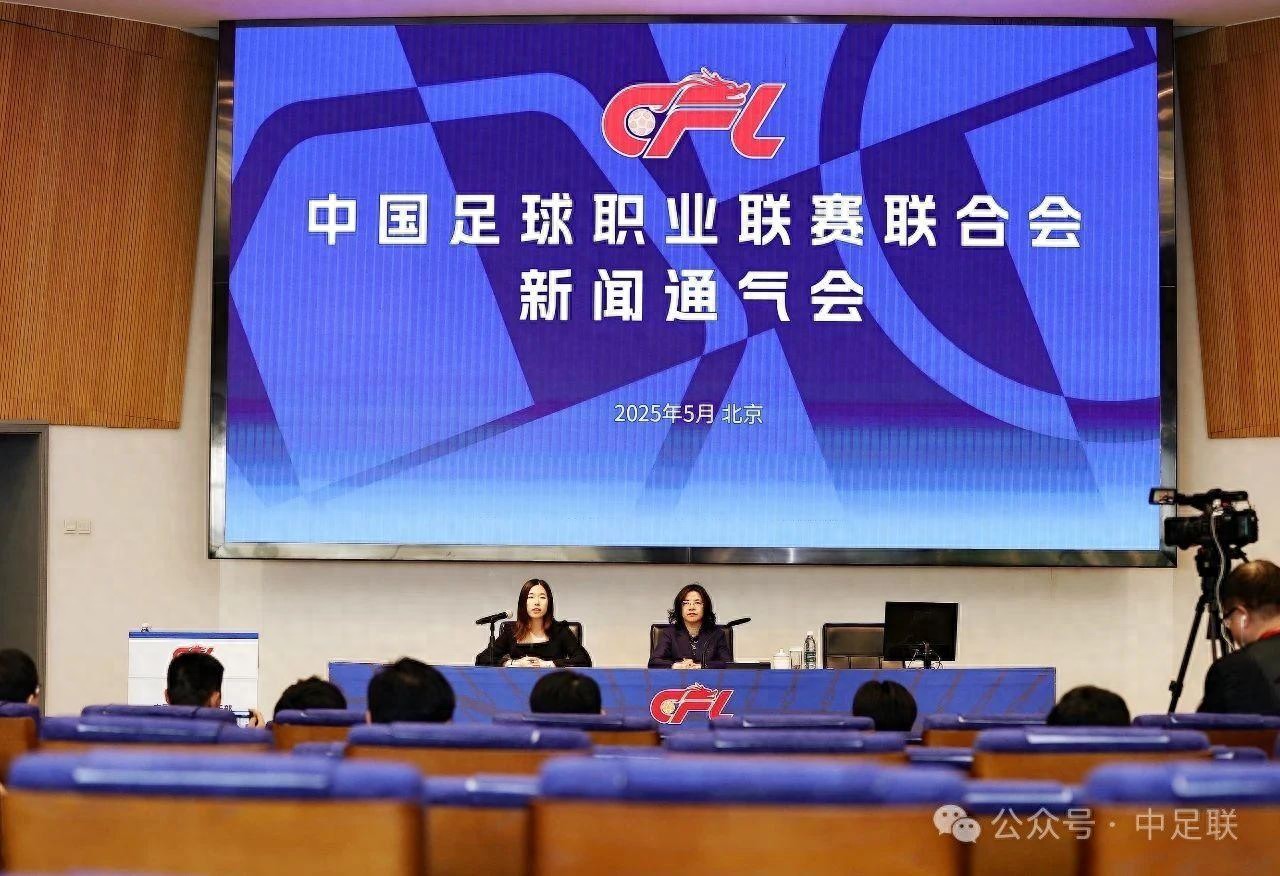In the first stage of the Chinese Super League, a number of statistics have been greatly improved: the number of viewers is the first in Asia, and the average number of goals per game has surpassed that of Japan and South Korea

Written by Han Bing On May 28, the Chinese Football Federation released various data for the first phase of the Chinese Super League, including the number of goals, the number of spectators, and the number of appearances and playing time of U21 players, which fully reflected the changes in the quality of the first phase of the Chinese Super League in the new season, the popularity of the ball market and the performance of young players.
The number of viewers in the Chinese Super League returned to the first place in Asia
A total of 101 matches were played in the first 13 rounds of the Chinese Super League this season, with a total of 2,461,500 spectators, an increase of nearly 400,000 from 2,062,900 in the same period last year. The average number of viewers per game was 24,371, an increase of 21.69% from 20,028 in the same period last year, which has exceeded the pre-epidemic year of 2019 (24,076 per game) and the highest record of the Chinese Super League in 2016 (24,159 per game).
Last year's "King of the Super League box office" was Beijing Guoan, Dalian InBev has the highest attendance so far this season, with 4 of the 6 home games exceeding 60,000 spectators, reaching a maximum of 61,185 people, nearly 7,000 more than last year's Super League single game with the highest audience of 54,189 people.

The Japanese J1 League has 18 rounds, with a total of 3,655,800 spectators, an average of 20,423 per game, 3,948 fewer than the Chinese Super League. Last season, the average number of viewers per game in the J1 League (20,355) exceeded that of the Chinese Super League (19,431), but this season, the Chinese Super League relied on the four "ticket warehouses" of Dalian InBev, Beijing Guoan, Chengdu Rongcheng and Shanghai Shenhua with an average of 30,000+ viewers per game, leaving J1 behind in the average number of viewers per game, and regaining the title of the top league with the largest average audience per game in Asia.
The J1 League has the largest number of viewers in a single game so far this season (Kashiwa Suns vs Kawasaki Frontale), and the Chinese Super League has exceeded 60,000 viewers in a single game on four occasions. Only 5 of the 179 games in the J1 League exceeded 50,000 spectators, and 7 of the 101 games in the Chinese Super League had "50,000+" spectators. As many as 25 of the 179 games in the J1 League had fewer than 10,000 spectators, accounting for 14%. Only 11 of the 101 Super League games had less than 10,000 spectators, accounting for 11%.
South Korea's K1 League has played 16 rounds, with a total of 1.0349 million spectators in 98 games, with an average of 10,560 people per game, only 43.3% of the Chinese Super League. The K1 League had a maximum of 48,008 spectators in a single game (FC Seoul 1-0 Jeonbuk Hyundai), and only two games exceeded 40,000 people.
The average number of goals per game surpasses that of Japan and South Korea
The average number of goals per game in the first 13 rounds of the Super League this season was 3.35, compared to 3.02 in the same period last year. Over three goals were scored in 43 of the 101 matches, accounting for 42.6 per cent of all matches. Among them, 17 games reached 5 goals or more, 6 games reached 7 goals or more, and the most was 8 goals (Wuhan Three Towns 4-4 Beijing Guoan). In the first 13 rounds, there were 42 games in which the number of goals scored in a single game was 2 goals or less, accounting for 41.6% of all games; Only 3 games were scored, accounting for 2.97% of all matches.
A total of 402 goals have been scored in 179 games in the J1 League this season, an average of 2.25 goals per game. Among them, only 29 games had more than three goals scored in a single game, accounting for 16.2% of all matches. Five or more goals were scored in 10 games and seven goals were scored in 2 games. 107 games with 2 goals or less in a single game, accounting for 59.78% of all matches; Of those, 11 of them were scoreless, accounting for 6.15% of all matches.
In 98 games in the K1 league this season, 219 goals have been scored, an average of 2.23 goals per game. Among them, there were only 19 games in which more than 3 goals were scored in a single game, accounting for 19.4% of all games. Five of those games amounted to five goals, with the most being five goals. 57 games with a single goal of 2 goals or less, accounting for 58.16% of all games; Among them, 10 were blanks, accounting for 10.2% of all matches.
Under-21 players have seen a significant increase in appearances
According to the statistics of the Chinese Football Federation, the U21 players in the first stage of the Chinese Super League this season have played 200 times, with a total of 10,594 minutes of playing time. Compared to 65 players and 3,016 minutes played in the same period last year, the number of appearances of young players this season is three times that of the same period last year, and the total playing time is 3.5 times that of last year. The 10 U21 players in the Chinese Super League have scored a total of 20 goals, and Wang Yudong of Zhejiang Greentown has scored 8 goals, making him the local player with the most goals in the Chinese Super League.

In the last 16 rounds of the K1 league this season, there are 32 U21 players played, less than the Chinese Super League (34). He made 233 appearances and played a total of 10,172 minutes. Among them, 9 players played 500 minutes, and 2 players who played more than 1,000 minutes, namely Jeonbuk Hyundai's 21-year-old midfielder Kang Sang-yun (1,071 minutes) and Suwon FC's 21-year-old defender Lee Heon-yong. The seven U21 players in the K1 League have a combined record of 11 goals and three assists. Last season, the K1 League U21 played as many as 45 players, far ahead of the Chinese Super League, and this season the Chinese Super League has made significant progress in the use of U21 players.
The 20-team J1 League has played 18 games, with 36 U21 players making a total of 226 appearances and a total of 10,238 minutes played. Seven of them have played more than 500 minutes and four have played more than 1,000 minutes, including Kawasaki Frontale 20-year-old central defender Yukidai Takai, FC Tokyo 20-year-old defender Kota Dohi, midfielder Kota Tarata and Osaka Sakura 20-year-old striker Sata Kitano. It is worth mentioning that the J1 League has 5 teams: Kashiwa Suns, Urawa Red Diamonds, Machida Keyaki, Yokohama FC, and Niigata Swans, and none of the U21 players have played in the first 18 rounds. Seven Under-21 players combined to score 13 goals and provide nine assists. FC Tokyo striker Maki Kitahara, who turned 16 in July, has made seven appearances, making him the youngest player to appear in the J1 League this season.










 Links
Links
 Contact
Contact
 App
App


